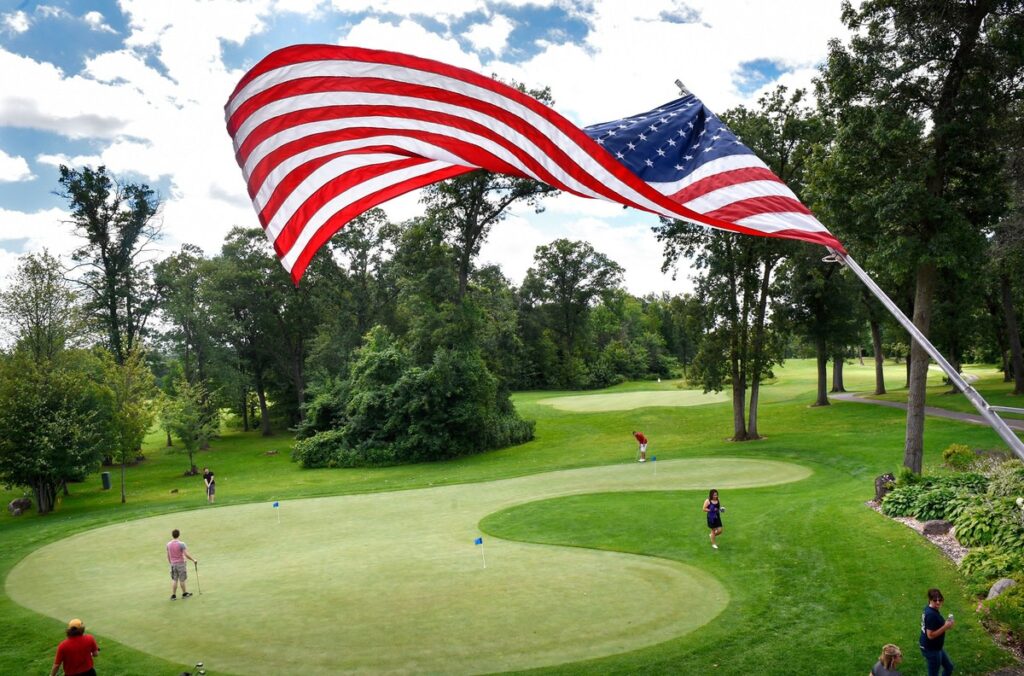The Soul of American Golf- A Journey Through the Game’s Heart and Heritage originally appeared on Athlon Sports.
Standing on the first tee at Winter Park Golf Course in Winter Park, Florida, last week, I watched a grandfather teach his grandson how to grip a club while morning dew still clung to fairways that have seen countless golfers walk before them. It reminded me why I fell in love with this game 45 years ago. Winter Park happens to be where I cut my teeth as a young PGA member 16 years ago, and honestly, this course is American golf in its purest form.
It’s not the manicured perfection of Augusta National or the intimidating grandeur of Pebble Beach. It’s the humble, accessible essence of a sport that’s woven itself into the fabric of our communities from coast to coast.
The Revolution of American Golf
As a 16-time award-winning PGA member and coach who’s dedicated three decades to this industry, I’ve witnessed golf’s remarkable evolution from an exclusive gentleman’s pastime to something much more democratic. While our nation grapples with division and questions about access and opportunity, golf has quietly been writing its own story of progress — one where a player’s zip code or background doesn’t determine their potential.
The numbers tell a pretty compelling story: Nearly 16,000 golf courses spread across almost 14,000 facilities throughout the United States, with nearly three-quarters of them open to the public. This isn’t the elitist country club stereotype that once defined American golf. This is a sport that’s opened its doors wide, offering accessible recreation at an average greens fee of just $41.
The transformation has been nothing short of revolutionary. When I began my career in the 1990s, golf was still struggling to shed its image as a sport for the privileged few. Today, we’re witnessing unprecedented growth among demographics that were historically underrepresented. Youth participation has surged, women now comprise 26% of all golfers, and ethnic diversity in the game has reached an all-time high of 28%.
These aren’t just statistics — they represent millions of individual stories of discovery, challenge and joy that unfold on golf courses every single day.
The Architects of American Golf
The architectural tapestry of American golf tells the story of our nation’s relationship with the game across more than a century. During golf’s golden era of design, visionary architects like A.W. Tillinghast, Donald Ross and Alister MacKenzie created masterpieces that remain the gold standard today.
Donald Ross alone — the Scottish master who designed more than 400 courses in America — left an indelible mark with classics like Pinehurst No. 2. MacKenzie’s genius at Augusta National created a course that’s both beautiful and brutally demanding.
The post-war boom brought architects like Robert Trent Jones Sr., who created more than 500 courses in 35 countries, democratizing golf architecture with his philosophy of “hard par, easy bogey.” Contemporary visionaries like Pete Dye revolutionized the game with dramatic designs, while Tom Fazio emerged as the modern era’s most influential architect, with 14 courses ranked among Golf Digest’s America’s 100 Greatest.
Today’s designers like Tom Doak, Gil Hanse and the partnership of Bill Coore and Ben Crenshaw continue pushing boundaries while working with natural landscapes, creating courses that feel both timeless and environmentally conscious.
The Heart of the Game
But American golf isn’t defined solely by its championship courses and architectural masterpieces. The true heart of the game beats strongest at the thousands of municipal courses, daily-fee facilities and humble nine-hole layouts that serve as golf’s grassroots foundation.
These are the courses where most Americans learn the game, where weekend foursomes gather for their weekly ritual, where junior golfers take their first swings. I’ve spent countless hours at these unpretentious facilities, and they hold a special place in my heart.
You know the ones I’m talking about — the nine-hole course that doubles as a cow pasture during the offseason, where the “clubhouse” is a converted trailer and the driving range is marked by old tires and faded flags. These courses may not make any “greatest” lists, but they’re where the soul of American golf truly resides.
Innovation and Inclusion
The evolution of golf instruction and non-traditional experiences has opened entirely new pathways into the game. Topgolf has revolutionized the driving range experience, turning practice into entertainment and attracting millions who might never have set foot on a traditional golf course. Programs like The First Tee have introduced millions of children to golf while emphasizing character development and life skills.
The growth in participation has been particularly encouraging among women and minorities. The success of young professionals and LPGA stars has inspired a new generation of players who see golf as both accessible and aspirational.

Golf’s American Impact
The economic impact of golf in America is staggering and often underappreciated. The industry generates $226.5 billion in total economic impact, supporting 2.1 million jobs and contributing $80.1 billion in wage income. Perhaps most remarkably, golf’s charitable impact reaches $4.6 billion annually through more than 141,000 charity events held at golf courses across the country.
Golf courses also provide 2 million acres of green space, much of it in urban areas where such space is increasingly precious. These facilities are typically seven to 10 degrees cooler than their surroundings, providing natural air conditioning for their communities while serving as wildlife habitats and water conservation showcases.
Finding Common Ground
As someone who’s dedicated his career to making golf more accessible and inclusive, I’m particularly proud of the industry’s efforts to break down barriers. The Grassroots Grants Program has distributed $2.5 million to 318 community organizations since 2021, reaching more than 150,000 people — 87% ethnically diverse, 76% under 18 and 49% female.
With 47.2 million Americans participating in some form of golf in 2024, including 28.1 million who played on actual courses, the game’s reach continues to expand. The 543 million rounds played represent not just impressive participation numbers but millions of individual experiences of challenge, achievement and joy.
In a time when finding common ground seems increasingly difficult, golf offers something unique — a shared experience that transcends the divisions that too often define our public discourse. On the golf course, your political affiliation doesn’t matter. Your background doesn’t determine your handicap. The game demands the same things from everyone: honesty, perseverance and respect for others.

A Game for Our Time
Golf in America today represents both aspiration and reality. From the architectural masterpieces that test the world’s best players to the humble municipal courses that serve weekend warriors, from high-tech instruction facilities to the simple joy of a grandfather teaching his grandson to grip a club, American golf encompasses the full spectrum of human experience.
The soul of American golf beats strongest not in its most exclusive venues but in its most accessible ones, where the game’s inclusive spirit thrives and its future is being written by players who understand that golf’s greatest gift isn’t exclusivity but community.
In a nation still striving to fulfill its founding promise that opportunity should be available to all, golf has made genuine progress toward that ideal — challenging, rewarding and open to anyone willing to take that first swing. It’s not perfect, and neither is our country, but both are works in progress worth celebrating.
Perhaps that’s what makes golf so essentially American: the understanding that improvement is always possible, that each new round offers a fresh start, and that the greatest victories are often shared with others who’ve walked the same fairways, faced the same challenges, and discovered the same joy in a game that brings out both our individual best and our collective hopes.
Related: Keegan Bradley’s 2025 Ryder Cup Vice Captains Could Deliver Victory to US
Related: Let’s Talk About Why Keegan Bradley Should Be Ryder Cup’s First Playing Captain in 62 Years
Related: Allow Me to Introduce Myself
This story was originally reported by Athlon Sports on Jul 3, 2025, where it first appeared.
Read the full article here



